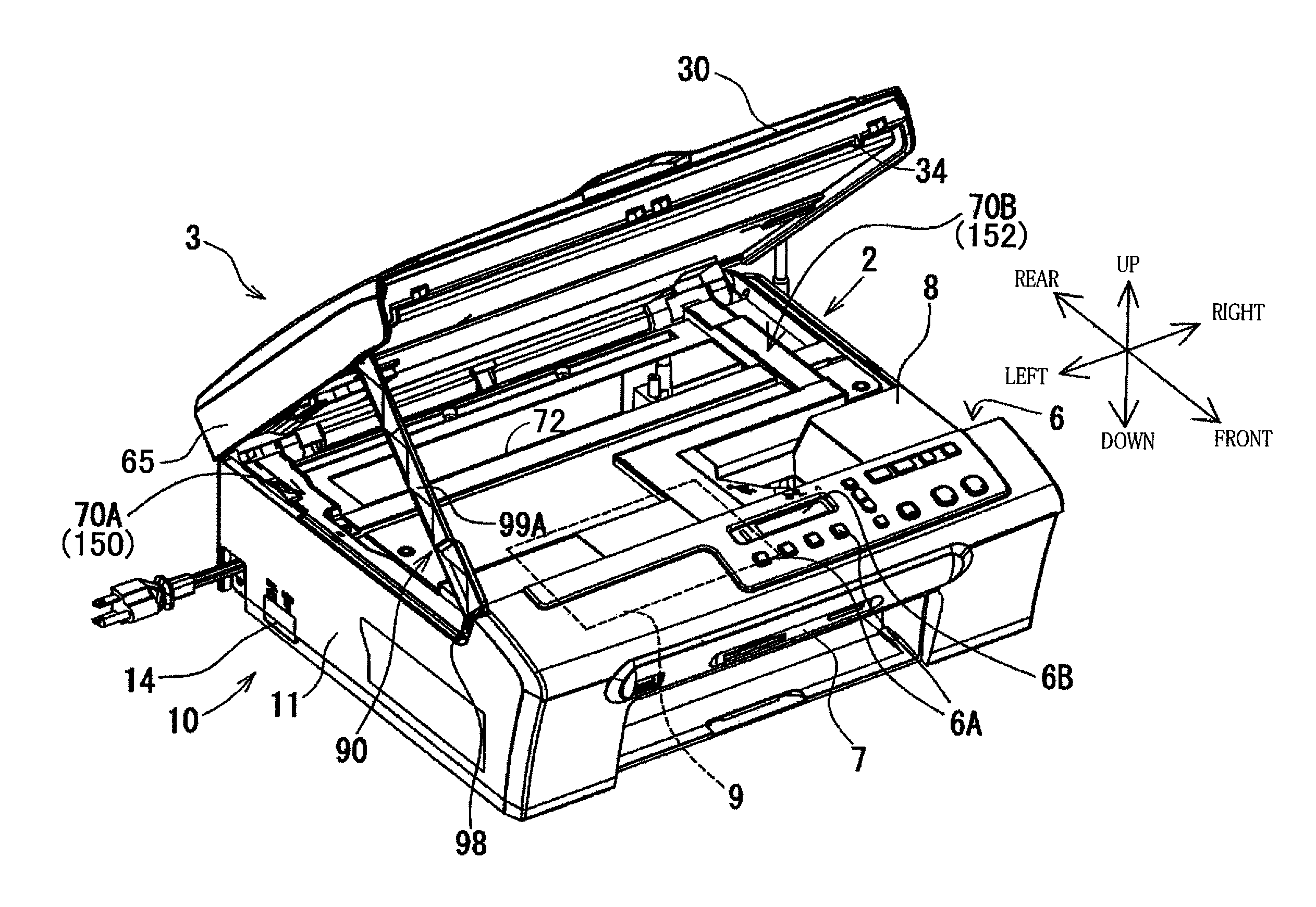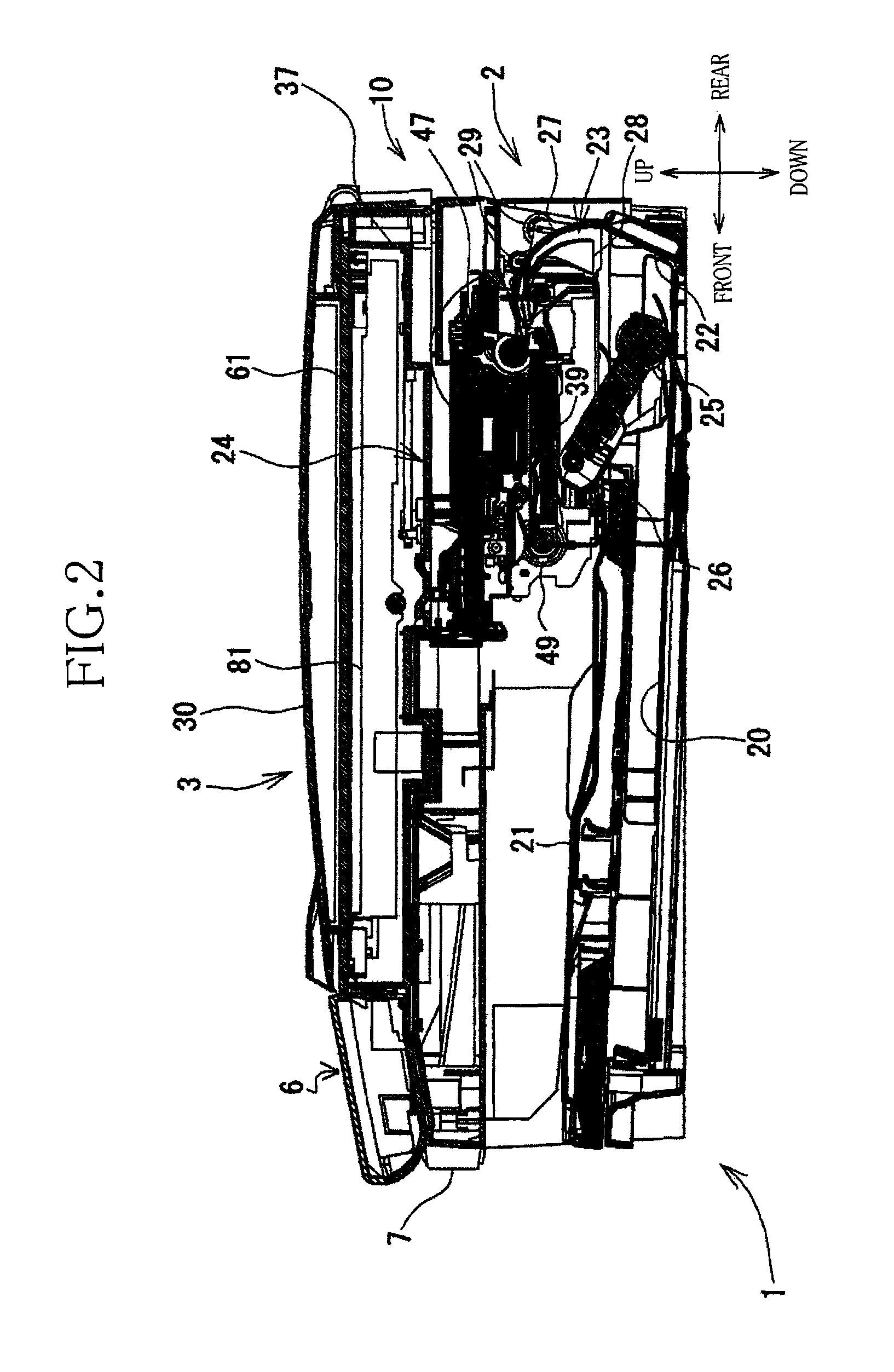Opening and closing assembly, and multifunction device including the assembly
a technology of opening and closing assembly and assembly, which is applied in the direction of electrographic process equipment, instruments, printing, etc., can solve the problem of pivoted cover body, and achieve the effect of smooth and quick opening
- Summary
- Abstract
- Description
- Claims
- Application Information
AI Technical Summary
Benefits of technology
Problems solved by technology
Method used
Image
Examples
Embodiment Construction
[0046]Referring to the accompanying drawings, there will be described an opening and closing assembly in the form of a multifunction device (MFD) 1 that is constructed according to an embodiment of the present invention. The multifunction device 1 is arranged to perform various functions such as printer, scanner, copier, telecommunication and facsimile functions. As shown in FIG. 1, the multifunction device 1 has a main body 10 that is provided by a generally rectangular parallelepiped body. A height of the main body 10 is smaller than a width and a depth of the main body 10. The main body 10 has a first casing body in the form of a printer unit 2 and a second casing body in the form of a flatbed scanner unit (hereinafter referred to as FBS unit) 3. The printer unit 2 serves as an image recording unit for recording an image onto a recording medium, while the FBS unit 3 superposed on the printer unit 2 serves an image reading unit for reading an image carried on an original. In the f...
PUM
 Login to View More
Login to View More Abstract
Description
Claims
Application Information
 Login to View More
Login to View More - R&D
- Intellectual Property
- Life Sciences
- Materials
- Tech Scout
- Unparalleled Data Quality
- Higher Quality Content
- 60% Fewer Hallucinations
Browse by: Latest US Patents, China's latest patents, Technical Efficacy Thesaurus, Application Domain, Technology Topic, Popular Technical Reports.
© 2025 PatSnap. All rights reserved.Legal|Privacy policy|Modern Slavery Act Transparency Statement|Sitemap|About US| Contact US: help@patsnap.com



